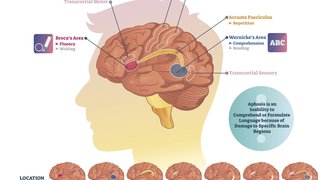
Using an advanced gene editing technology called CRISPR, our team of scientists at UT Southwestern has been able to stop the progression of Duchenne muscular dystrophy in animals and human cells – a breakthrough that could ultimately change the prognosis for the most common fatal genetic disease in boys.
In many ways DMD is the holy grail of genetic diseases, with more than 3,000 mutations. As we make headway with CRISPR on this condition, all indications are that we could use the technology for almost any disease in which we can identify a mutation in a patient’s DNA.
DMD is a degenerative muscle disorder that affects 1 in 3,500 boys born worldwide and typically results in muscle and heart failure, eventually leading to disability and premature death. The associated gene mutation halts the production of the protein dystrophin, which is critical for muscle function. Dystrophin maintains the integrity of muscles like scaffolding.
Girls rarely develop DMD because they have two dystrophin genes, whereas boys have just one. A girl's healthy gene tends to override her mutated one, causing mild if any symptoms.
To date, just one drug has been approved to treat the symptoms of DMD. So, researchers at UT Southwestern’s Hamon Center for Regenerative Science and Medicine are working to develop a therapy that treats the cause of the disease – mutations in the dystrophin gene. In a 2018 study, we found that editing dystrophin genes in animals with DMD improved heart function by approximately 80% in just eight weeks.
Estimates suggest that just a 15% improvement in dystrophin levels would greatly benefit humans.
To date, we've also used CRISPR to successfully edit the dystrophin gene in cells from DMD patients. The next major step is a clinical trial that we hope will generate an effective therapy and eventually a cure for patients born with DMD.
The Cutting Edge of CRISPR
When Ben Dupree looks through the microscope at his beating heart cells, he sees the future. Using a gene editing technology called CRISPR, Dr. Eric Olson and his lab at UT Southwestern were able to correct a genetic flaw in Ben's cells that had caused him to face the muscle deterioration since childhood associated with Duchenne muscular dystrophy. “It’s unbelievable,” Ben says. "This could save so many lives one day.”
What is CRISPR technology?
The best way to describe CRISPR gene editing is that it functions like a spell-checker for DNA. You can program it to find any misspelled word in the book of life and direct it to go there and correct the typo.
Using the Cas9 protein to "slice" through specific sections of DNA, CRISPR can disable a malfunctioning gene or insert new genes to restore function. The pioneers of CRISPR technology won the Nobel Prize in chemistry in 2020.
CRISPRs are "clusters of regularly interspaced short palindromic repeats" – essentially the building blocks of DNA, separated by spacers, which are DNA fragments between the repeated sequences. By injecting a virus that contains the CRISPR components, we can deploy a molecular GPS device to direct Cas9 to the specific region of the gene to be edited. Following editing of the mutated gene, dystrophin gene expression can resume.
Our technique requires only a single cut at a strategic point along the subject’s DNA, with less risk and less intrusion than traditional gene-editing methods.
The beating heart of CRISPR
A study from UT Southwestern demonstrates how the CRISPR-Cas9 gene-editing technique improves the function of heart muscle cells taken from DMD patients. From left to right, the footage shows the beating function of a healthy cell, a DMD cell, and a cell edited by CRISPR-Cas9.
Next steps in our clinical research
In May 2020, a joint program of UT Southwestern and Children's Health was approved as a Certified Duchenne Care Center (CDCC) – the only CDCC in Texas. UT Southwestern physicians provide care for pediatric DMD patients at Children's Health. This designation shows that we are focused on providing the most advanced, highest standard of muscular dystrophy care. UT Southwestern has also been recognized by the establishment of the Wellstone Center for Muscular Dystrophy Research by the National Institutes of Health.
Longer-term studies are needed to measure whether dystrophin levels remain stable and to ensure the gene edits do not have adverse side effects. The lab is hopeful to conduct a clinical trial on DMD, which would be among several that UT Southwestern’s gene therapy center aims to launch in the coming years to address numerous deadly childhood diseases.
The team recently published research in PNAS regarding further exploration into the differences between various gene activities and types of muscle fibers. One day, we hope this knowledge will help us find the optimal level at which to edit genes for maximum patient benefit.
Ultimately, our goal is to find a cure for Duchenne muscular dystrophy.
To request an appointment with one our specialists or to learn about treatment options for DMD, please call 214-645-8300 or request an appointment online.










